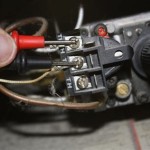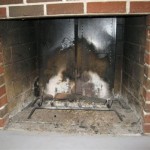Artificial Stone Fireplace Materials: A Comprehensive Overview
Fireplaces have long been a central feature of homes, providing warmth, ambiance, and a focal point for gathering. While traditional fireplaces often utilized natural stone, artificial stone, also known as manufactured stone or cultured stone, has emerged as a popular alternative, offering various advantages in terms of cost, versatility, and ease of installation. This article will explore the different types of artificial stone fireplace materials, their benefits, drawbacks, and key considerations for selecting the appropriate option for a given project.
Artificial stone is generally made from a mixture of Portland cement, aggregates (such as sand or gravel), and pigments. This mixture is poured into molds to replicate the look and texture of natural stone. The resulting product offers a consistent appearance and often weighs less than natural stone, simplifying the installation process. Furthermore, artificial stone can be customized in a wide range of colors, textures, and shapes, providing homeowners and designers with greater design flexibility.
The Spectrum of Artificial Stone Options
Various artificial stone options cater to different aesthetic preferences and functional requirements for fireplace surrounds. The primary types include concrete-based stone, polymer-based stone, and veneer options.
Concrete-based artificial stone is the most common type and is typically produced using a mixture of Portland cement, aggregates, and pigments. This type of stone is durable, fire-resistant, and relatively affordable. It can be molded to mimic various natural stone styles, including fieldstone, river rock, and stacked stone. Concrete-based stone is suitable for both indoor and outdoor fireplace applications.
Polymer-based artificial stone utilizes a polymer resin as a binder instead of cement. This results in a lighter-weight product that is more resistant to cracking and staining. Polymer-based stone can also be molded into more intricate designs and textured surfaces. While often more expensive than concrete-based stone, it offers enhanced durability and a more realistic appearance.
Veneer stone encompasses both concrete-based and polymer-based options but is specifically designed for application as a thin layer over an existing surface. Veneer stone is ideal for remodeling projects where structural changes are undesirable or impractical. It is thinner and lighter than full-thickness artificial stone, making it easier to install and requiring less structural support. Veneer stone effectively transforms an existing fireplace surround without the need for extensive demolition.
Benefits of Artificial Stone for Fireplaces
Artificial stone offers several advantages over natural stone when used for fireplace surrounds. These advantages include cost-effectiveness, design versatility, ease of installation, and consistent quality.
Cost-effectiveness is a significant factor. Artificial stone is generally less expensive than natural stone, primarily due to lower quarrying and transportation costs. This makes it an attractive option for budget-conscious homeowners seeking the aesthetic appeal of stone without the high price tag.
Design versatility is another key benefit. Artificial stone can be manufactured in a wide range of colors, textures, and shapes, allowing for greater customization and design flexibility. This enables homeowners to achieve a specific look that complements their home's existing architectural style.
Ease of installation is a further advantage. Artificial stone typically weighs less than natural stone and is often designed with interlocking systems, making it easier to install. This can reduce labor costs and shorten the overall project timeline. Many homeowners with basic DIY skills can install artificial stone veneer themselves, further reducing expenses.
Consistent quality is ensured in manufactured stone. Unlike natural stone, which can vary significantly in color, texture, and quality, artificial stone is produced under controlled conditions. This results in a consistent appearance and predictable performance, minimizing the risk of unsightly variations or structural weaknesses.
Drawbacks and Considerations
While artificial stone offers numerous benefits, it's important to consider potential drawbacks and key considerations before making a final decision. These include durability limitations, appearance concerns, and environmental impact.
Durability limitations are a factor. While artificial stone is generally durable, it may not be as long-lasting as natural stone, especially in harsh environments. Concrete-based stone can be susceptible to cracking and staining over time, while polymer-based stone may fade or degrade with prolonged exposure to sunlight. Proper maintenance and sealing can help extend the lifespan of artificial stone.
Appearance concerns can arise. Although artificial stone is designed to mimic the look of natural stone, it may not always achieve the same level of realism. Some artificial stone products can appear artificial upon close inspection, particularly if the color and texture are not convincingly replicated. Selecting high-quality artificial stone from reputable manufacturers can mitigate this issue.
Environmental impact needs to be considered. The production of artificial stone involves the use of cement and other materials, which can have a negative impact on the environment. The manufacturing process can consume energy and resources, and the disposal of artificial stone waste can contribute to landfill pollution. Choosing artificial stone products made from recycled materials or manufactured using sustainable practices can help minimize the environmental footprint.
Ultimately, the selection of artificial stone for a fireplace surround requires careful consideration of the project's budget, design goals, and performance requirements. By weighing the benefits and drawbacks of different artificial stone options and consulting with experienced professionals, homeowners can make informed decisions that result in a beautiful and functional fireplace that enhances the value and appeal of their homes.

Dk Studio

Stone Fireplace Surround Ideas You Ll Love Columbia Mo

Quality Stone Faux

ᑕ❶ᑐ Faux Stone Electric Fireplace Where Does It Match Best

The Pros And Cons Of Manufactured Stone Veneer Home Resources Abr

11 Stone Veneer Fireplace Surround Design Trends Where To Buy

Jerre S Faux Stone Fireplace Surround Genstone

Great Designs For Faux Stone Fireplaces And How To Diy

Stone Veneer At Com

How To Build A Diy Stone Fireplace Boxwood Design Co
Related Posts








